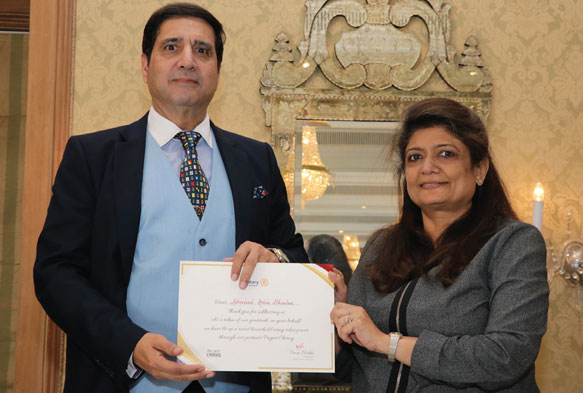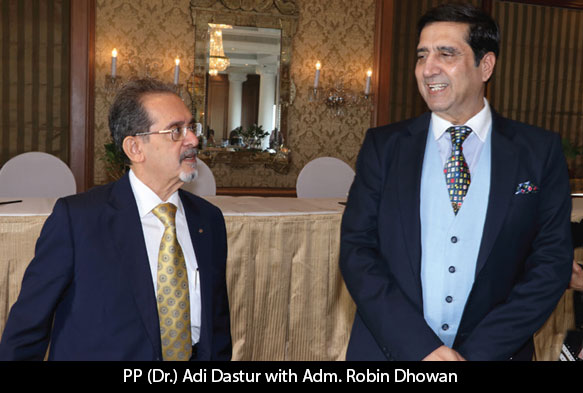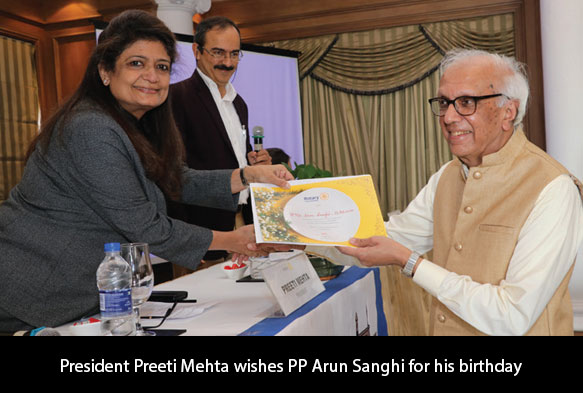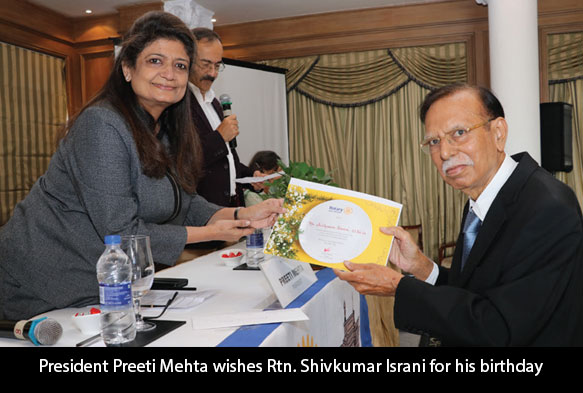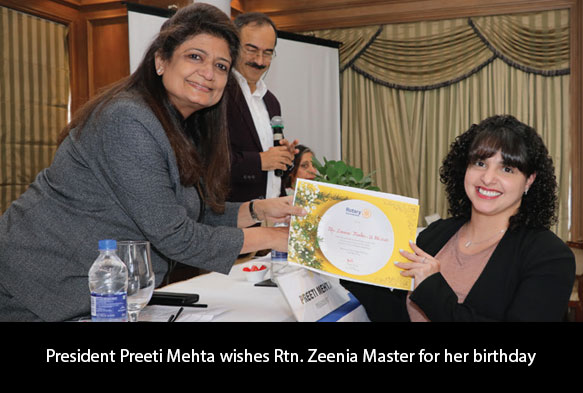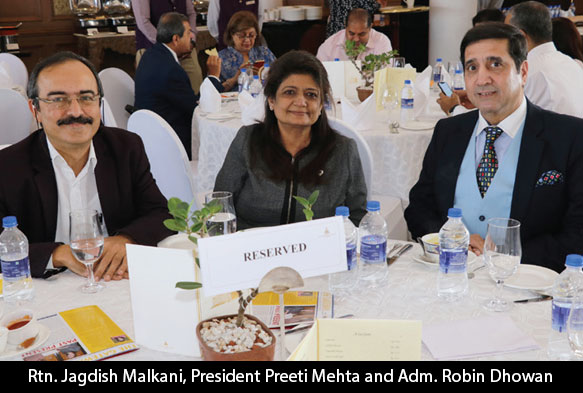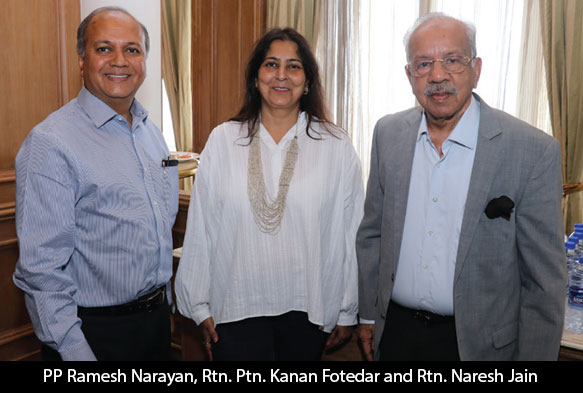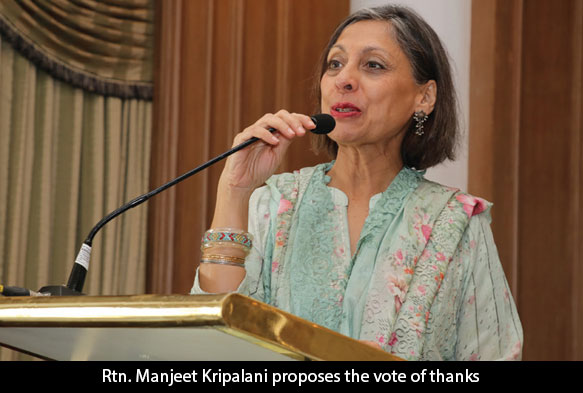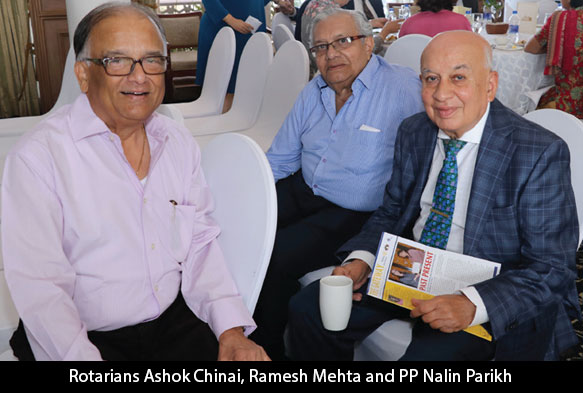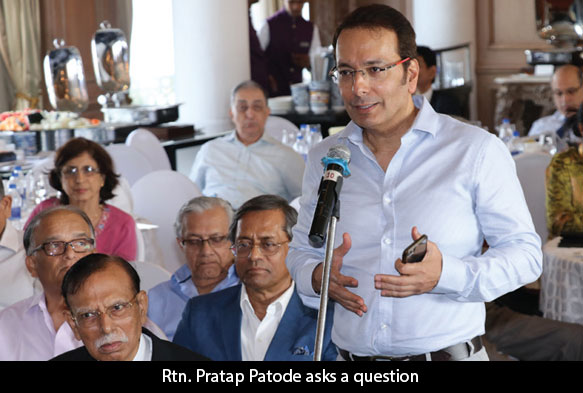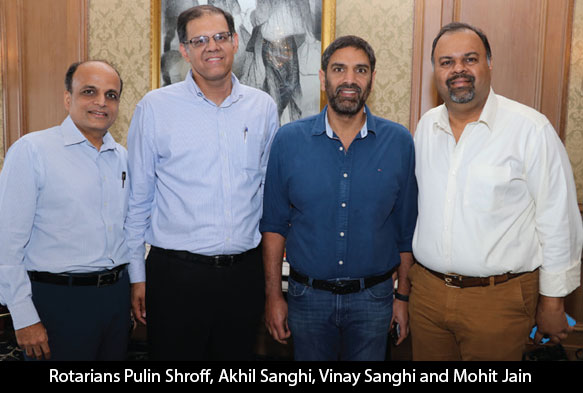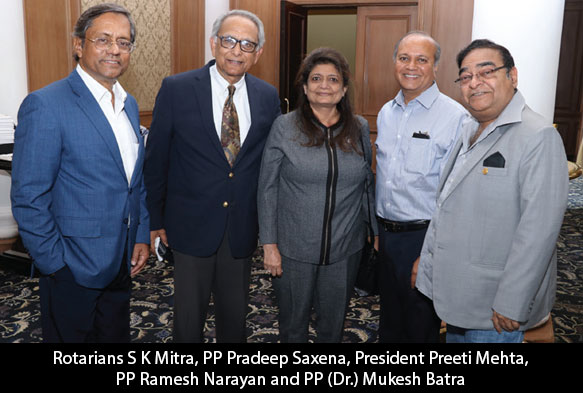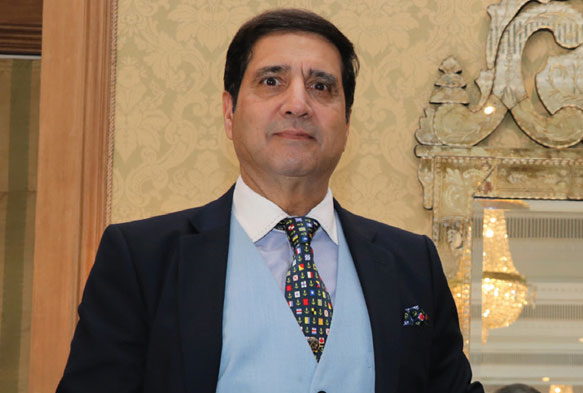
Water World
Adm. Robin Dhowan spoke to Rotarians about India’s place in the maritime world
In the Indian Ocean region, we have about 120,000 ships which transit through here every year and these ships carry 66 per cent of the world’s oil, 50 per cent of the world’s container traffic and 33 per cent of the world’s cargo traffic. About a billion tonne of oil passes through the Indian Ocean every year and these routes lead further to the ASEAN countries like Japan, South Korea and China. But the seas are no longer a benign medium and globalisation has resulted in vulnerability of the oceans.
The threats and challenges on the waters of the Indian Ocean are wide and varied. Who could have thought that even in the 21st century we would be battling with pirates and Maritime terrorism. Other challenges include arms trafficking, human trafficking, drugs smuggling, poaching or illegal and unreported fishing.
Another challenge on the water of the Indian Ocean is the indiscriminate pollution of the ocean resulting in climate change of the ocean. Consequently, a large percentage of extreme climate conditions turn into natural disasters. Thus, the Navy and the coast guard have to be constantly ready to provide humanitarian assistance and disaster relief. Instability and turbulence in some part of the Indo Pacific region have the potential to spill over on to the maritime domain and this situation can be best described as fragile. Consequently, over 120 warships from nearly 20
countries are always present in the Indian Ocean to safeguard their Maritime interest.
India has advocated adherence to international law, maintenance and promotion of peace and stability, Maritime safety and security, freedom of navigation and all of life in the region. Our blue planet, Earth has a dominance of the Maritime domain with over 70% of the Earth surface covered by water and 80% of the world’s population living within 200 nautical coast and 90% of the world’s trade transiting by sea. Oceans are therefore central to life on Earth. They are rich in oil mineral resources, suppliers of oxygen, absorbers of carbon dioxide, they are a virtual heat sink, rich in biodiversity which has emerged as Global economic Highway for the transit of sea borne trade.
The concept of a Blue economy has emerged as a new paradigm and I would like to define harnessing the Blue economy as the economic development of all our Maritime interests by optimal utilisation of resources with minimal impact on environment to sustainable development of the oceans. India has a long coastline of 7,516 kilometres, exclusive economic zone of over 2 million square kilometres. We have over 1300 islands and islets including the Andaman and Nicobar, Lakshadweep group in Arabian sea and Islands of the East and West Coast of India. Nearly 90% of our trade by volume and 77% by value transits by sea. This accounts for nearly 30% of the country’s GDP. Over the last few years under the leadership of our Prime Minister Shri Narendra Modi there has been a series of initiatives for the sustainable development in the maritime domain in the quest to harness the blue economy.
The challenge, however, is to ensure that all this development is to be carried out in accordance with the sustainable development goals promulgated by the United Nations. And it has to be sustainable development of oceans with minimal impact on the environment. India’s primary interest in the maritime domain is the Indian Ocean region and secondary area of interest is the entire waters of the Indo-Pacific region. The term Indo-Pacific has moved decisively from its origins in biogeography to the realms of geopolitics. Today the Indo Pacific which is essentially a confluence of two oceans has emerged as the world’s economic and strategic centre of gravity in the maritime domain.
As far as India is concerned the details of the Indo-Pacific region have actually been defined by our Prime Minister
Narendra Modi when he covered the bounds from the shores of Africa, the shores of Asia and he also said that the engagement in the region will be inclusive. The Indian Navy is the primary instrument of India’s Maritime military power and it ensures that as a multidimensional Navy, it takes care of all the threats and challenges in the maritime domain.
The waters of the Indo-Pacific have emerged as global highways and the maritime interest of the countries of the region are intrinsically linked to unfettered flow of oil and trade across the region.
Another interesting feature of the Indian Ocean is that 80% of the oil and trade that emanates in Indian ocean is extra regional nature. This implies that if there is any impediment to the free flow of oil and trade it will have a detrimental impact not just on the economy of the country but to the global economy as well.
Safety, security and stability on the waters of Indo-Pacific is therefore of paramount importance and to achieve this networking between navies and Maritime partnership between the countries of the nation need to be strengthened in the coming years.

